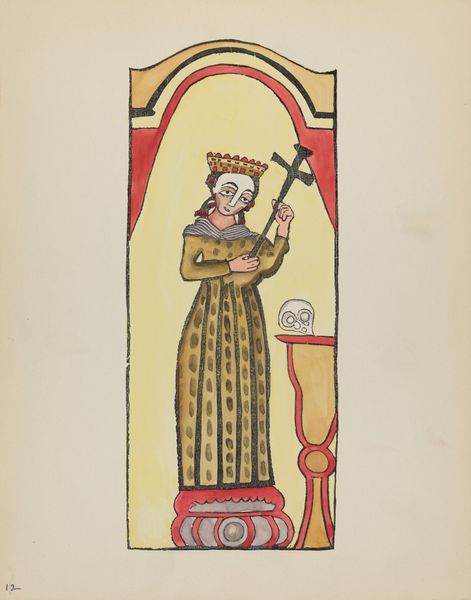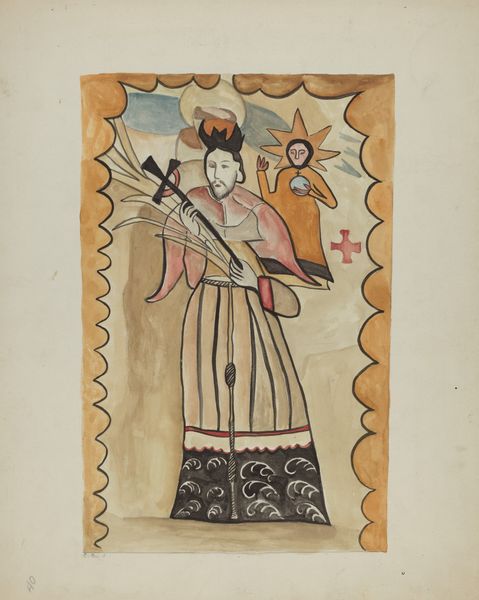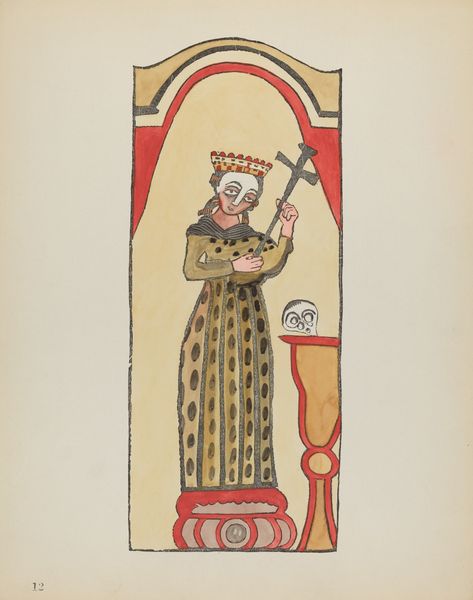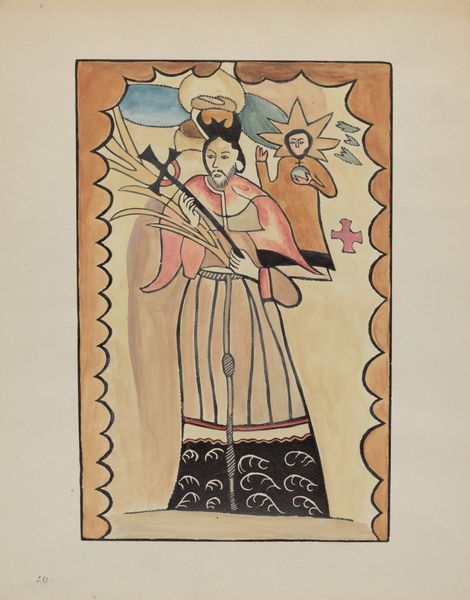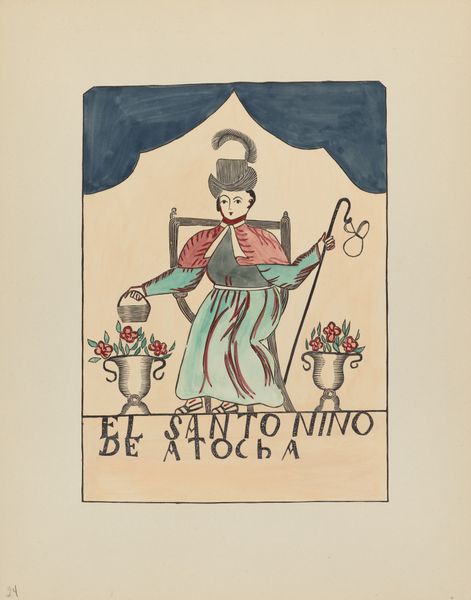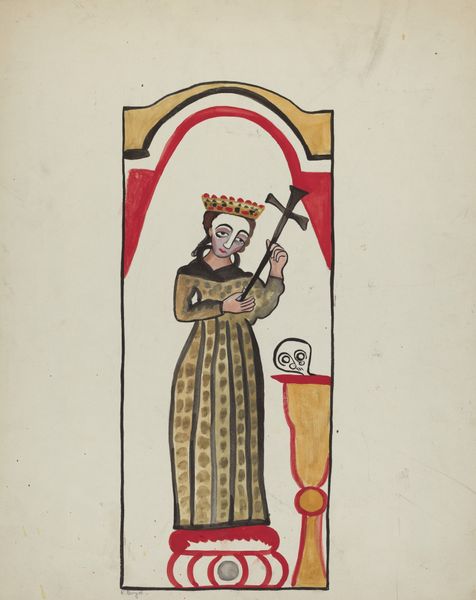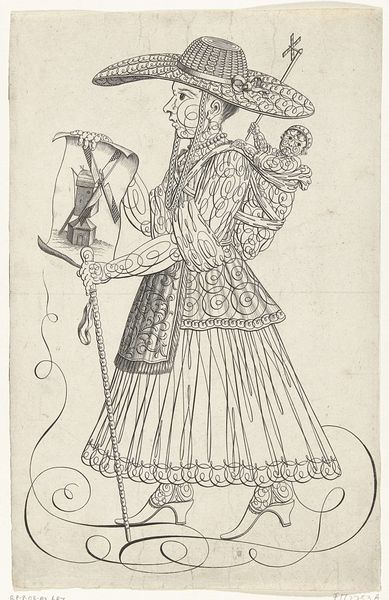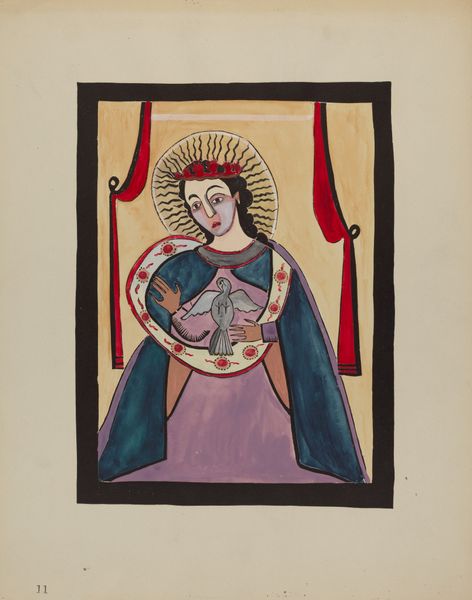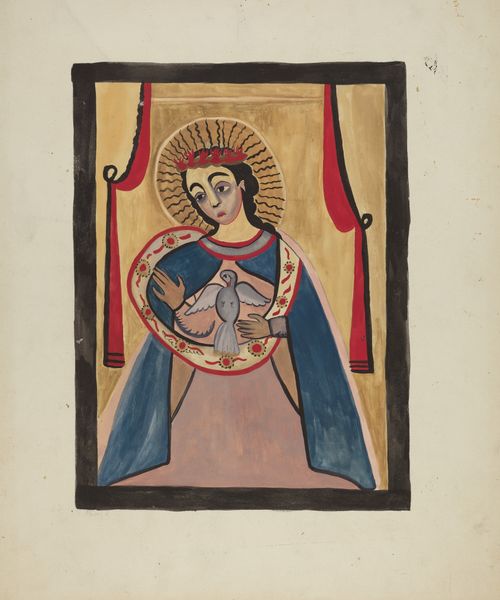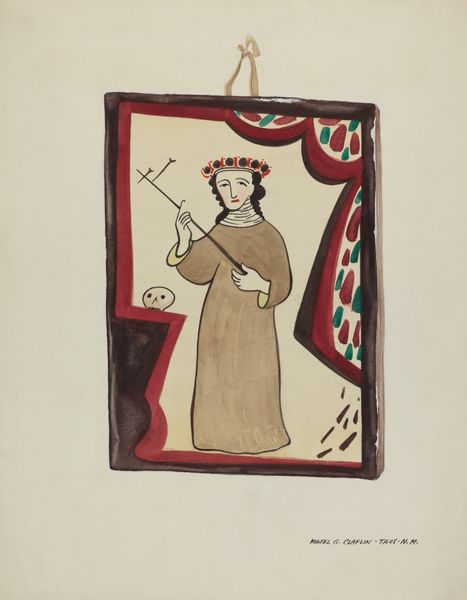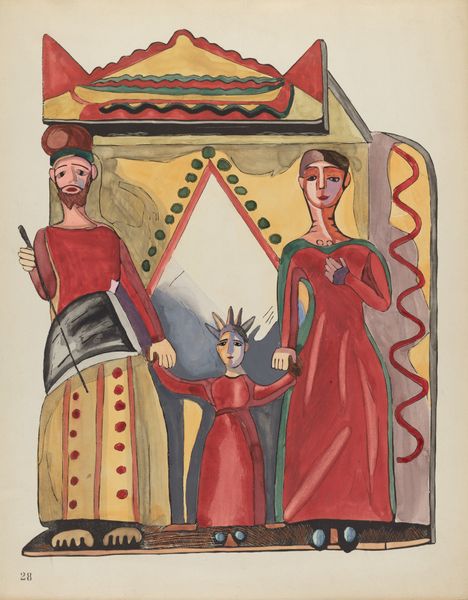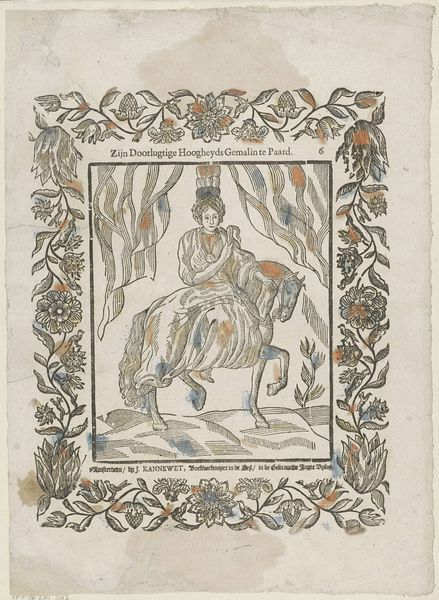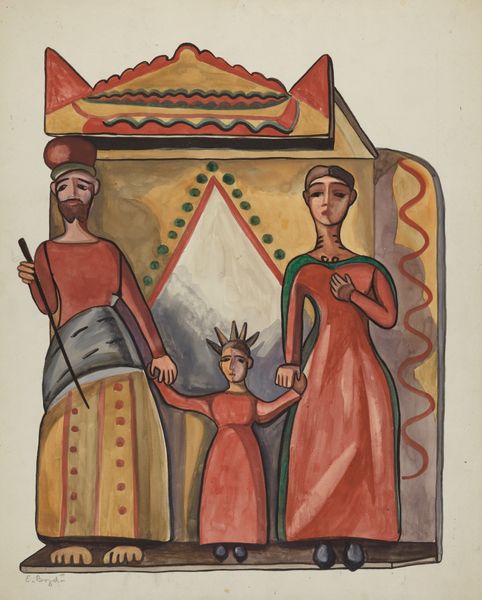
drawing, painting, watercolor
#
drawing
#
narrative-art
#
painting
#
figuration
#
watercolor
#
folk-art
#
mexican-muralism
#
watercolour illustration
Dimensions: overall: 35.6 x 24.1 cm (14 x 9 1/2 in.)
Copyright: National Gallery of Art: CC0 1.0
Editor: This is E. Boyd's "Retablo-Child's Saint," dating from between 1935 and 1942, created with watercolor and drawing techniques. There’s a real simplicity to it, almost like a page from a children’s book, but with a formality, too. What strikes you most about it? Curator: What I see here is more than just a simple religious image; it's a fascinating intersection of folk art traditions and complex cultural narratives. Look at the way "El Santo Nino de Atocha," a specific representation of the Christ Child, is depicted. Notice the fine clothes and hat – it is as if the artist wants to highlight their cultural sophistication in tandem with spirituality. Editor: I didn’t pick up on that tension at first. Curator: Boyd wasn't merely replicating religious iconography, but documenting its evolution within specific communities. These retablos often served as powerful forms of expression for marginalized voices, a way to narrate their experiences and negotiate their identities within the dominant culture. Who were the subjects? What messages were sent by these visual strategies? Editor: So it's not just about faith; it’s about identity and resistance? Curator: Precisely. The Child Saint figure, while seemingly passive, embodies a long history of cultural syncretism and adaptation. By understanding the social context in which these retablos were created, we can unpack their layers of meaning and appreciate their significance as acts of cultural preservation and defiance. Editor: I see it so differently now, recognizing this blend of devotion and cultural assertion. It makes the image so much more powerful. Curator: Yes. Thinking critically, this artwork goes beyond simplistic depiction. Understanding the world this was made in adds another vital element in thinking about the cultural meaning of visual representation.
Comments
No comments
Be the first to comment and join the conversation on the ultimate creative platform.
